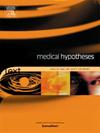Female urinary continence mechanism: a dynamic biomechanical balance
IF 0.8
4区 医学
Q3 MEDICINE, RESEARCH & EXPERIMENTAL
引用次数: 0
Abstract
Female urinary incontinence has been redefined as a dynamic biomechanical equilibrium governed by three synergistic mechanisms: (1) Mechanical equilibrium mechanism of bladder neck-perineal body dynamics, which stabilizes urethral closure during pressure surges; and (2) urethral kinking through mid-proximal urethral displacement differences; (3) sphincter-pelvic floor muscle synergy to amplify compressive forces. (4).Neuro-Biomechanical Synergistic Control Mechanism.This hypothesis challenges static anatomical models by emphasizing real-time adaptive biomechanics and explains stress urinary incontinence (SUI) through force transmission, neuromuscular coordination, or chronic pressure overload faults. Clinically, real-time imaging and computational modeling are advocated to replace traditional examination modalities to quantify biomechanical deficits-structural, functional, and neurogenic. Targeted interventions include perineal body reinforcement surgery and nerve retraining programs. Validation requires multidisciplinary trials: prospective cohorts linking dynamic parameters to incontinence outcomes, finite element simulations of mechanism interactions, and randomized comparisons of mechanism-specific therapies. The framework bridges biomechanics, neural control, and clinical practice, enabling a shift from symptom management to precise mechanism-based SUI treatment.
女性尿失禁机制:动态生物力学平衡
女性尿失禁被重新定义为由三种协同机制控制的动态生物力学平衡:(1)膀胱颈-会阴体动力学的力学平衡机制,在压力波动时稳定尿道闭合;(2)尿道扭结通过中、近端尿道移位差异;(3)括约肌-盆底肌协同放大压缩力。(4).神经-生物力学协同控制机制。这一假说通过强调实时自适应生物力学来挑战静态解剖模型,并通过力传递、神经肌肉协调或慢性压力过载故障来解释压力性尿失禁(SUI)。临床上,实时成像和计算建模被提倡取代传统的检查方式来量化生物力学缺陷-结构,功能和神经源性。有针对性的干预措施包括会阴体强化手术和神经再训练计划。验证需要多学科试验:将动态参数与失禁结果联系起来的前瞻性队列,机制相互作用的有限元模拟,以及机制特异性治疗的随机比较。该框架连接了生物力学、神经控制和临床实践,实现了从症状管理到基于精确机制的SUI治疗的转变。
本文章由计算机程序翻译,如有差异,请以英文原文为准。
求助全文
约1分钟内获得全文
求助全文
来源期刊

Medical hypotheses
医学-医学:研究与实验
CiteScore
10.60
自引率
2.10%
发文量
167
审稿时长
60 days
期刊介绍:
Medical Hypotheses is a forum for ideas in medicine and related biomedical sciences. It will publish interesting and important theoretical papers that foster the diversity and debate upon which the scientific process thrives. The Aims and Scope of Medical Hypotheses are no different now from what was proposed by the founder of the journal, the late Dr David Horrobin. In his introduction to the first issue of the Journal, he asks ''what sorts of papers will be published in Medical Hypotheses? and goes on to answer ''Medical Hypotheses will publish papers which describe theories, ideas which have a great deal of observational support and some hypotheses where experimental support is yet fragmentary''. (Horrobin DF, 1975 Ideas in Biomedical Science: Reasons for the foundation of Medical Hypotheses. Medical Hypotheses Volume 1, Issue 1, January-February 1975, Pages 1-2.). Medical Hypotheses was therefore launched, and still exists today, to give novel, radical new ideas and speculations in medicine open-minded consideration, opening the field to radical hypotheses which would be rejected by most conventional journals. Papers in Medical Hypotheses take a standard scientific form in terms of style, structure and referencing. The journal therefore constitutes a bridge between cutting-edge theory and the mainstream of medical and scientific communication, which ideas must eventually enter if they are to be critiqued and tested against observations.
 求助内容:
求助内容: 应助结果提醒方式:
应助结果提醒方式:


